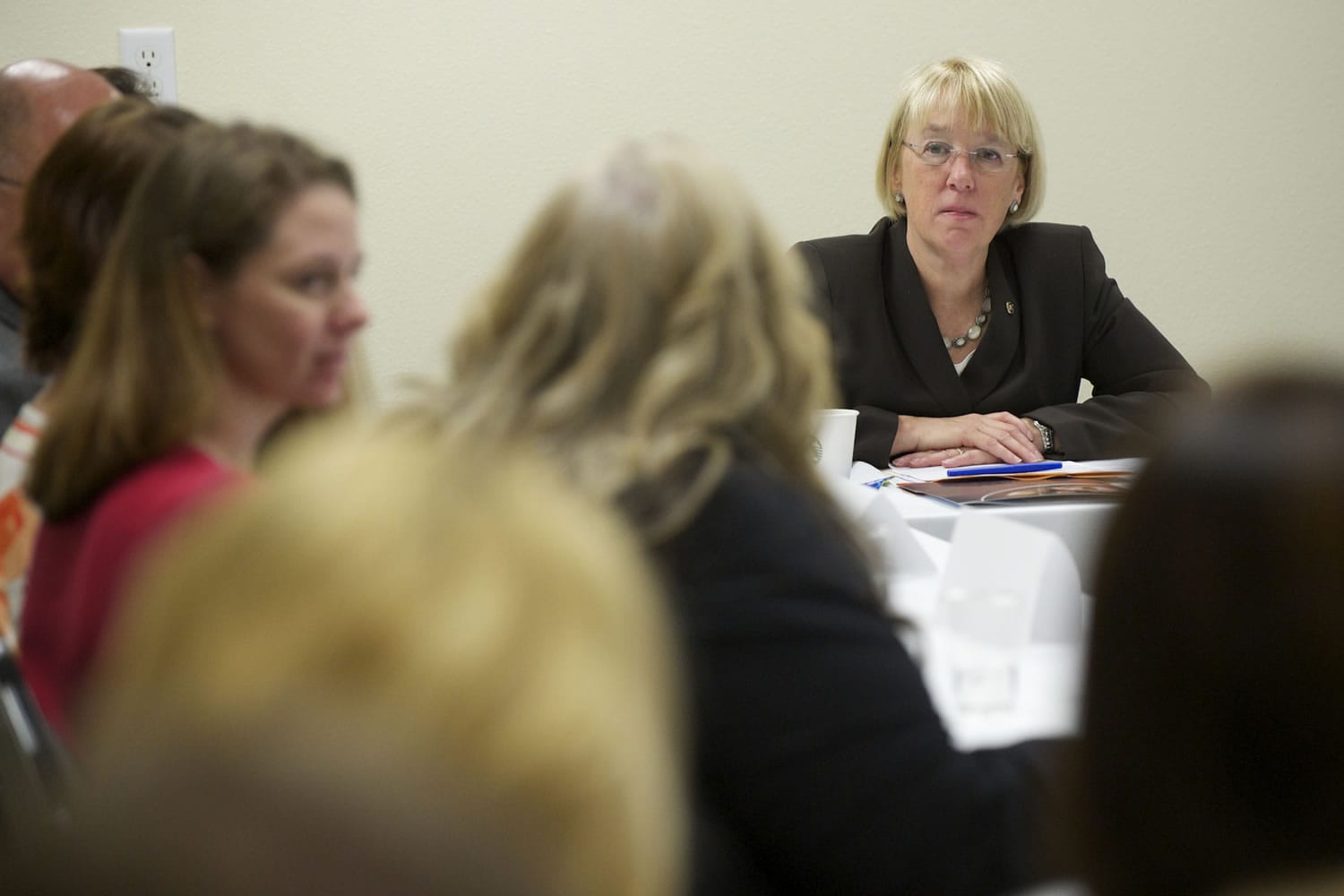Pointing out the recent collapse of the Interstate 5 Skagit River bridge, U.S. Sen. Patty Murray said Friday that opponents of the Columbia River Crossing project need to stop and think about what could happen if officials fail to replace the I-5 Bridge over the Columbia River.
Murray said she’s met with Skagit County businesses entrenched in the traffic nightmare that followed the bridge collapse, as cars and big rigs were forced to detour around the now defunct portion of I-5.
“Seeing the businesses that have been impacted, the tears in their eyes … I can’t imagine that happening here if (the Columbia River) bridge were to be shut down because it was declared too unsafe,” Murray said during a stop in Vancouver. “It doesn’t have to be that way.”
During an interview with The Columbian, Murray also turned up the heat on CRC opponents, suggesting that they have no backup plan to replace the Columbia River I-5 Bridge in a prompt manner.
At the federal level, “there is no backup plan,” the Democrat said. “The people who are opposing (the CRC) need to tell you what the backup plan is.”
Murray reiterated what she’s said before: the federal government is ready to cover a large chunk of the project, but those hard-to-get dollars will slip away if the Washington Legislature fails to commit its $450 million share of the controversial project this year. The loss of funding would set the project back to square one, and officials would need to spend years coming up with a new bridge-replacement. And any new plan is bound to be just as contentious as the current one.
“The likelihood of any federal funding being there for a new project, 15 to 20 years from now, still in the planning and design (phases), is very, very close to nil,” she said, adding that nearly two decades of planning have gone into the CRC.
“We are within reach,” Murray said of completing the project. “It is one of the most critical projects in our entire state, region and nation.”
Several times, Murray called the Columbia River I-5 Bridge unsafe and said the “people who don’t want this to go forward don’t often think of the consequences if they win, and I think they need to think about that. … If this bridge collapsed here, there would be loss of life, there’s no doubt about it. I don’t want to go to anybody’s funeral to get federal funding.”
Hearing on highways
Murray delivered a similar message on Thursday, when she led a hearing on the nation’s aging infrastructure as chair of the Appropriations Subcommittee on Transportation, Housing, Urban Development and Related Agencies. She announced the federal government had secured $15.6 million for a temporary I-5 span over the Skagit River, and led a conversation about the crumbling condition of U.S. roads.
“Our transportation system requires collaboration, among all levels of government,” Murray said. “It is a shared responsibility, as we have recently seen, as we worked together on the Skagit River bridge, and we have to make sure that safety is everyone’s top priority.”
One in nine of the nation’s bridges are structurally deficient, and the average age of the country’s bridges is 42 years old, Sen. Susan Collins, R-Maine, said during the hearing. According to the Federal Highway Administration. Collins said, the government needs to invest more than $100 billion each year to maintain the nation’s highways and $70 billion beyond that each year if those highways are to meet future transit needs.
“This will prove extremely difficult, given that the revenues collected for the highway trust fund already do not support the current level of federal spending,” Collins said Thursday. “The math is clear. The trust fund collected $40 billion last year but spent close to $50 billion.”
Murray said the Skagit River bridge collapse demonstrated that even though the likelihood of failure on a bridge can appear low, “the result can be catastrophic.”
The Skagit River bridge was not considered structurally deficient, which means key elements of the bridge are in poor condition. Such bridges can require truck weight restrictions. The Skagit bridge was, however, deemed functionally obsolete, meaning it doesn’t meet current traffic standards such as proper lane width, and it was considered fracture critical, meaning a big enough blow to a crucial part of the structure could cause a collapse.
The I-5 Bridge over the Columbia River, like the Skagit River bridge, is functionally obsolete and fracture critical, but it is not structurally deficient. Its northbound span was built in 1917, and its southbound span was built in 1958.
An Oregon transportation spokesman emphasized recently that the bridge is safe, calling it “a pretty robust bridge.”
In Vancouver on Friday, Murray also attended a roundtable discussion about early childhood education. After her interview with The Columbian, Murray was whisked away to more meetings. Her staff was tight lipped about who else Murray planned to chat with during her Vancouver stay.
Stevie Mathieu: 360-735-4523 or www.facebook.com/reportermathieu or www.twitter.com/col_politics or stevie.mathieu@columbian.com
Watch the video of Sen. Patty Murray’s remarks on YouTube




